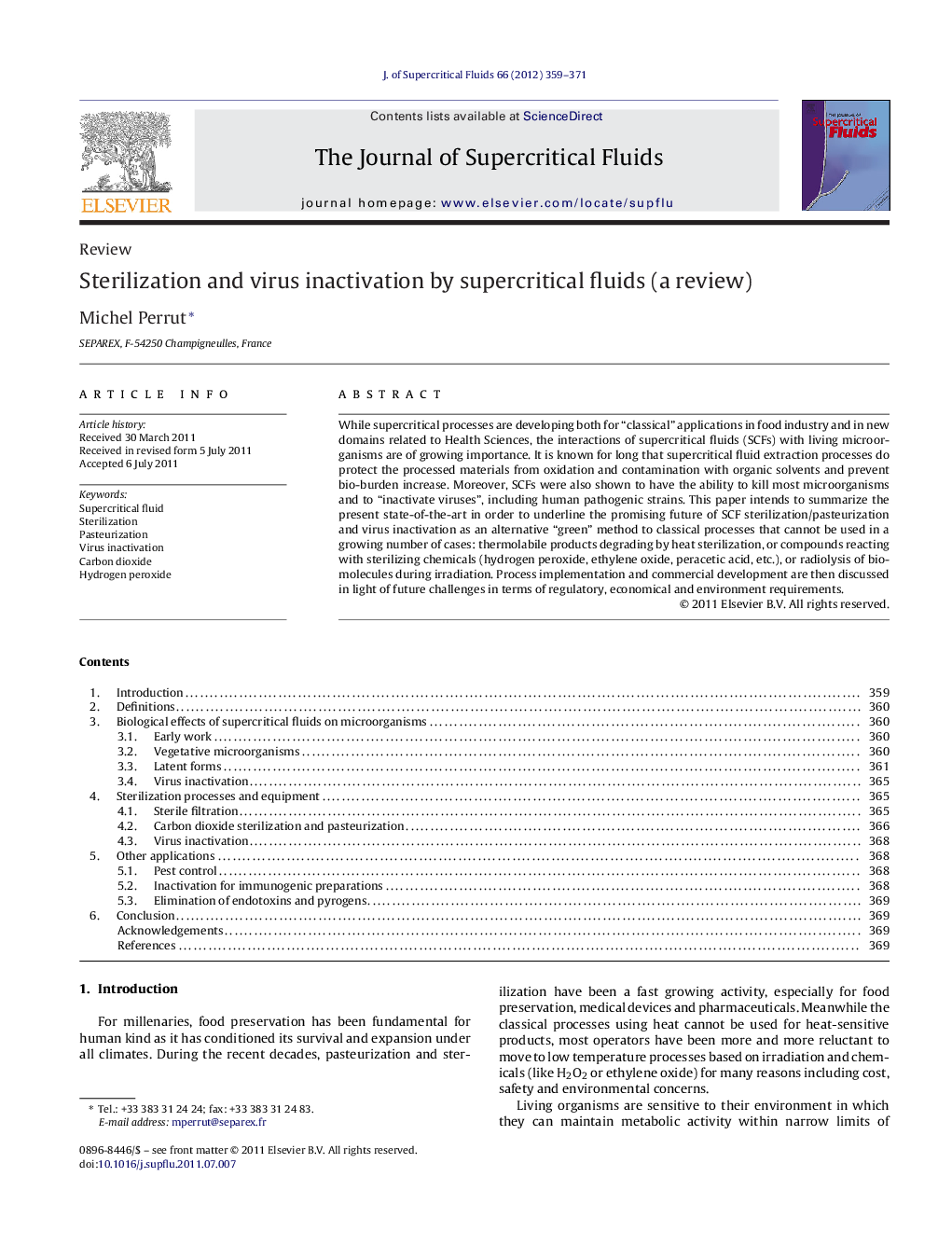| Article ID | Journal | Published Year | Pages | File Type |
|---|---|---|---|---|
| 231133 | The Journal of Supercritical Fluids | 2012 | 13 Pages |
While supercritical processes are developing both for “classical” applications in food industry and in new domains related to Health Sciences, the interactions of supercritical fluids (SCFs) with living microorganisms are of growing importance. It is known for long that supercritical fluid extraction processes do protect the processed materials from oxidation and contamination with organic solvents and prevent bio-burden increase. Moreover, SCFs were also shown to have the ability to kill most microorganisms and to “inactivate viruses”, including human pathogenic strains. This paper intends to summarize the present state-of-the-art in order to underline the promising future of SCF sterilization/pasteurization and virus inactivation as an alternative “green” method to classical processes that cannot be used in a growing number of cases: thermolabile products degrading by heat sterilization, or compounds reacting with sterilizing chemicals (hydrogen peroxide, ethylene oxide, peracetic acid, etc.), or radiolysis of bio-molecules during irradiation. Process implementation and commercial development are then discussed in light of future challenges in terms of regulatory, economical and environment requirements.
Graphical abstractFigure optionsDownload full-size imageDownload as PowerPoint slideHighlights► Survey on biological effects of supercritical fluids on microorganisms. ► Bacteria, fungi and virus can be inactivated by subcritical or supercritical CO2. ► Spore inactivation is complex and requires addition of a sterilent agent in CO2. ► Applications are operative for pest (insects, larva) elimination. ► Bacteria sterilisation is near to commercial development.
